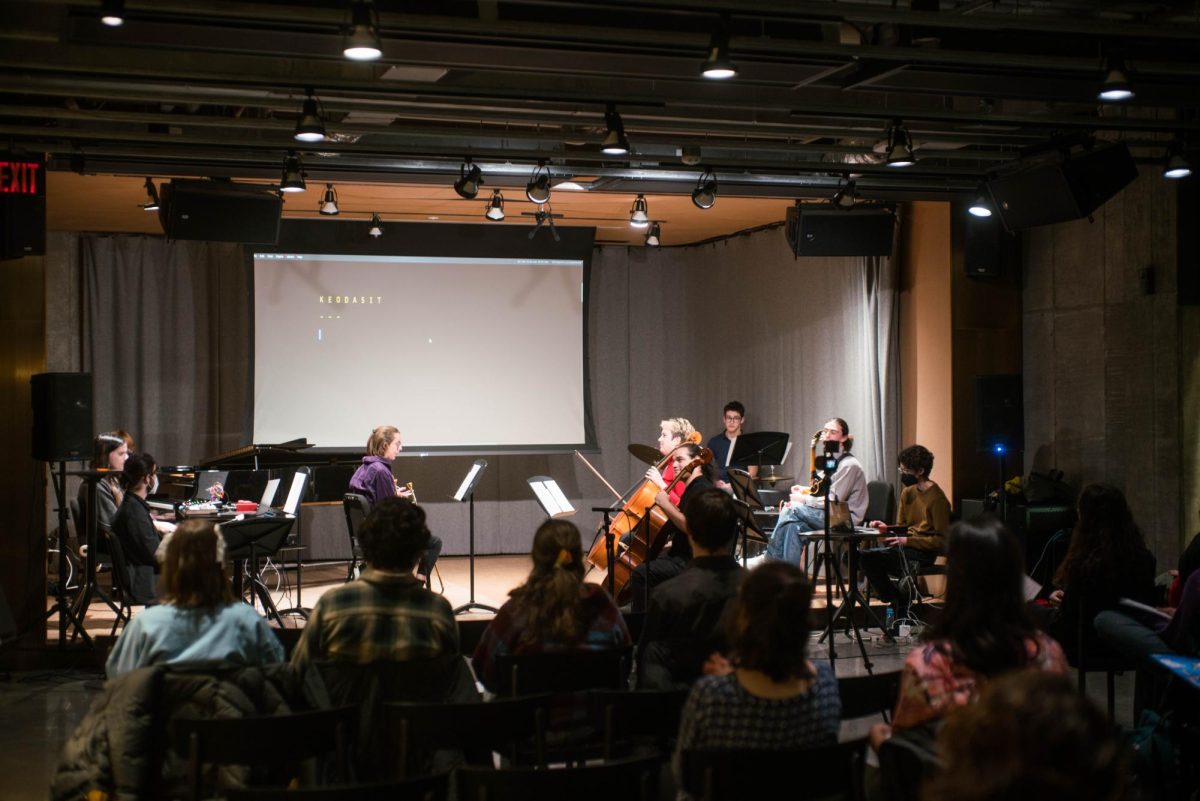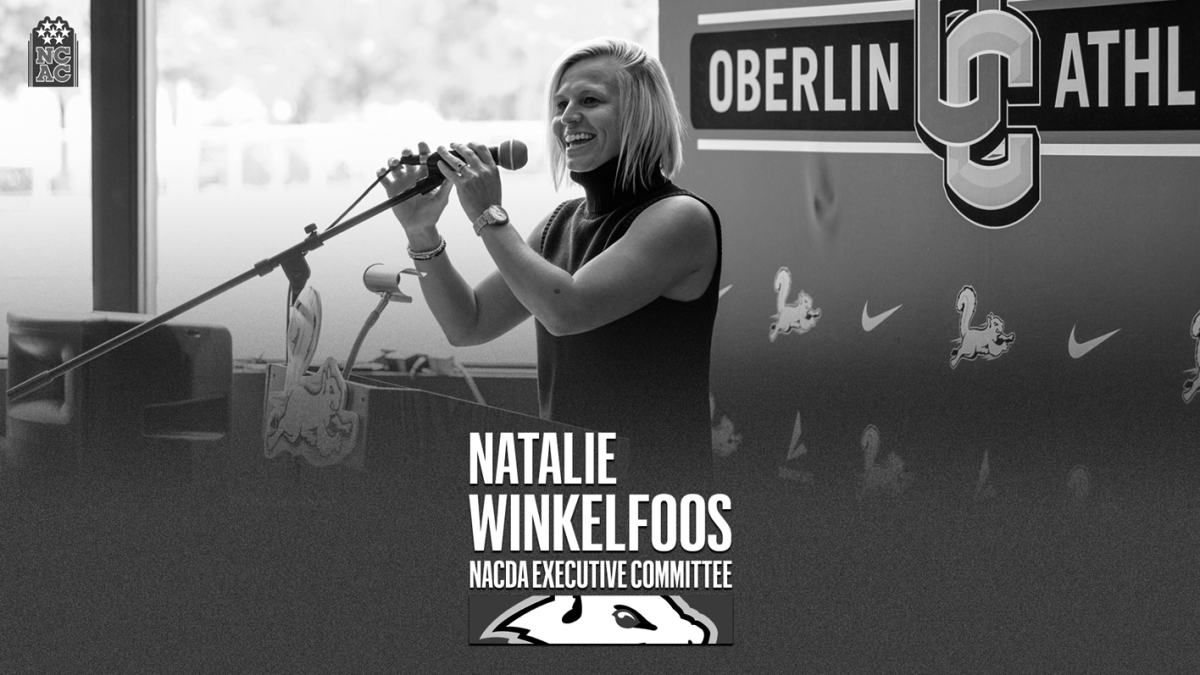On Tuesday, the Oberlin Creative Music Lab performed at the Birenbaum Innovation and Performance Space. Led by Associate Professor of Contemporary Music and Improvisation and Director of Conservatory Professional Development Dana Jessen, the Creative Music Lab is both an ensemble and a class open to College and Conservatory students. The ensemble’s latest performance was composed of three students on electronics, two cellos, piano, guitar, trombone, bass recorder, and drums, and the set was entirely new compositions from many of the ensemble members.
The ensemble deals with contemporary works, many of which don’t involve sheet music. When that was the case, musicians in the group may interpret textual instructions, images, or videos, which were projected behind the performers during their Tuesday night performance.
“We’re not thinking about chord changes or anything like that,” second-year Jazz Performance major Donovan Musicant said. “Sometimes we have a key center in mind, but that’s pretty rare. It’s just a lot of listening to each other.”
The first piece, “Glorgbulbly,” by third-year TIMARA major Awen McKee, set the tone for the rest of the set. Projected on the screen on stage were the letters “KEODASIT,” a random set of letters that were each assigned to one of the performers. Below that, an anagram of this set was typed out as the piece progressed, starting with the letter “e.”
“We had a score with different symbols for each letter and corresponding musical suggestions,” second-year TIMARA major Oliver Harlan said. “In general, the music is more improvised than arranged.”
As each letter was added to the screen, the respective member joined in with their instrument. The piece crescendoed into a cacophony of sound and ebbed as the letters were gradually deleted.
Although there was a significant presence of electronic sounds, as is frequently the case in experimental music, the set never felt dominated by technology. There was also an emphasis on natural sounds, and those playing acoustic instruments worked in harmony with those on computers.
“Rainy Day Collage” by College fourth-year Bella Cauley began with a rain soundscape played from a computer. Bird calls joined in with the soundscape, and some instruments, notably the cellos, harmonized with the birds and adjusted their timbre to mimic the high-pitched and pristine quality of their calls. Timbre, which refers to the unique makeup of an instrument’s produced sound wave, was a big theme throughout the set. Many of the performers, including double-degree fifth-year Maya Sagarin, would change the ways they played their instruments to blend seamlessly with other instruments or electronic sounds. At certain moments, this timbral blending technique made it hard to distinguish who was actually producing a sound, resulting in sounds that weren’t inherently “trombone” or “cello,” but something entirely new.
“Being a classical brass musician, there’s often very prescribed stuff that we have to learn and play,” Sagarin said. “You have to shape a phrase a certain way and really pay attention to how the harmonies move. … It’s definitely kind of set in stone. This class really taught me how to listen in an ensemble and build my own facility on my instrument.”
Improvisation is also a key element of the Creative Music Lab; the class is heavily steeped in the avant-garde movement, an artistic movement which gained traction over the 20th century. This was aided by the Association for the Advancement of Creative Musicians, founded in 1965. Throughout the semester, Jessen encouraged students to draw from musicians associated with the AACM and the avant-garde, as well as other experimental musicians that weren’t necessarily rooted in the jazz idiom.
“There’s a long history to this music; … the AACM really created the foundation for it,” Sagarin said. “There’s a lot of fluidity and ambiguity, but Professor Jessen had such useful ideas to shape a piece and make your improvisation sound cohesive and sound engaging.”
The Creative Music Lab’s Tuesday performance — and the music that the performance drew inspiration from — is hard to categorize. In a conservatory setting, there can be an element of rigidity that gets placed upon students, and the Creative Music Lab presents an opportunity to push back on that rigidity and redefine what music can be.




